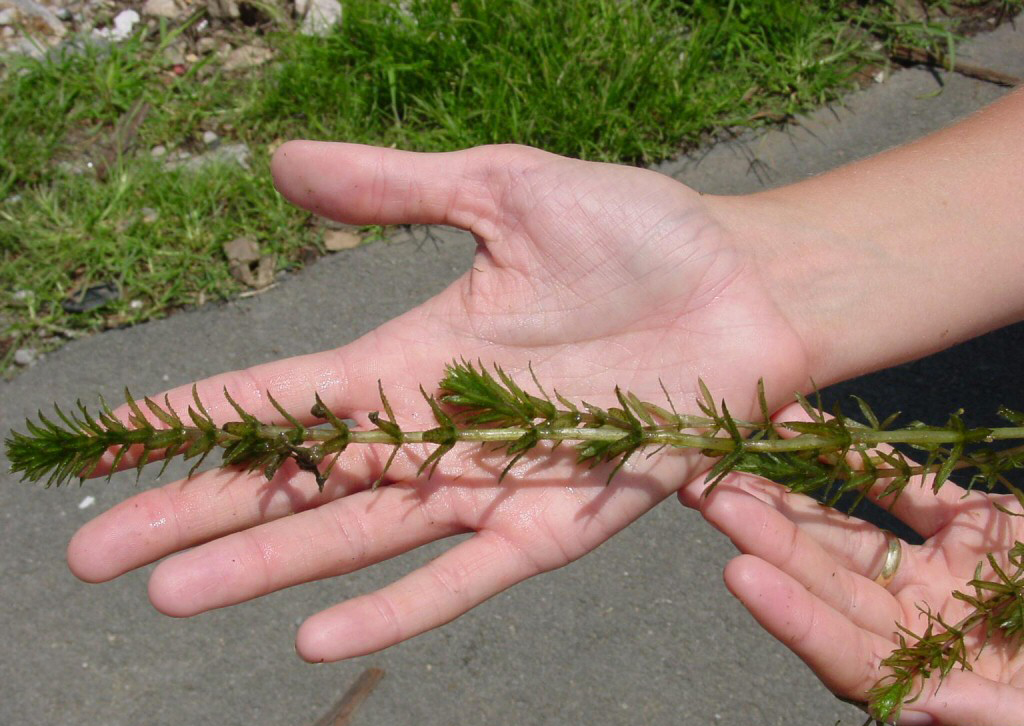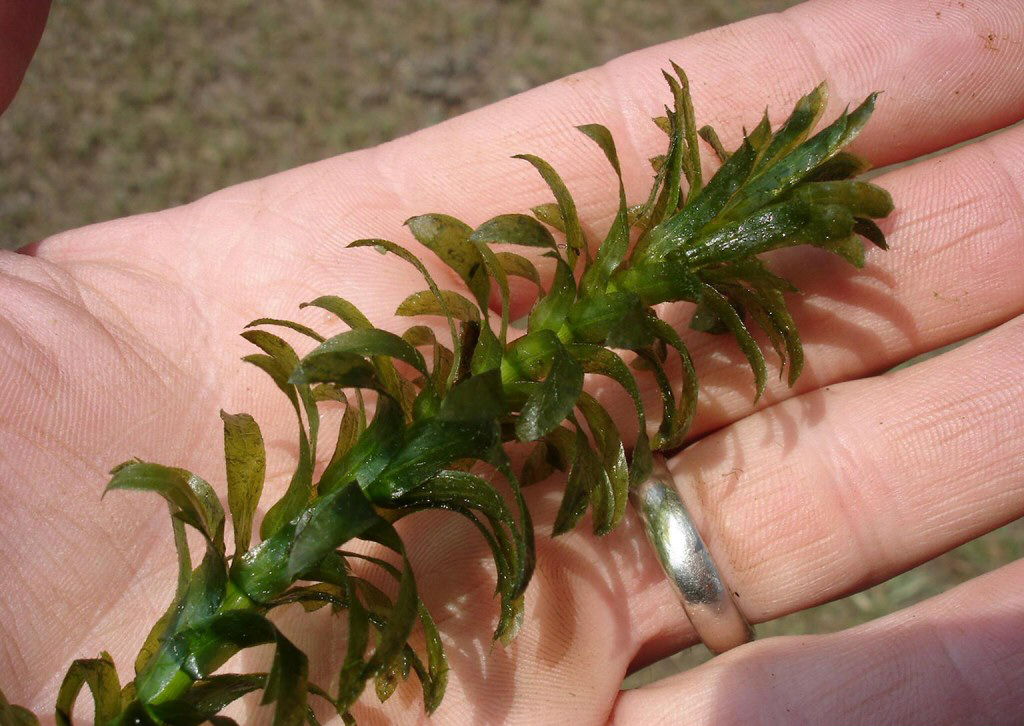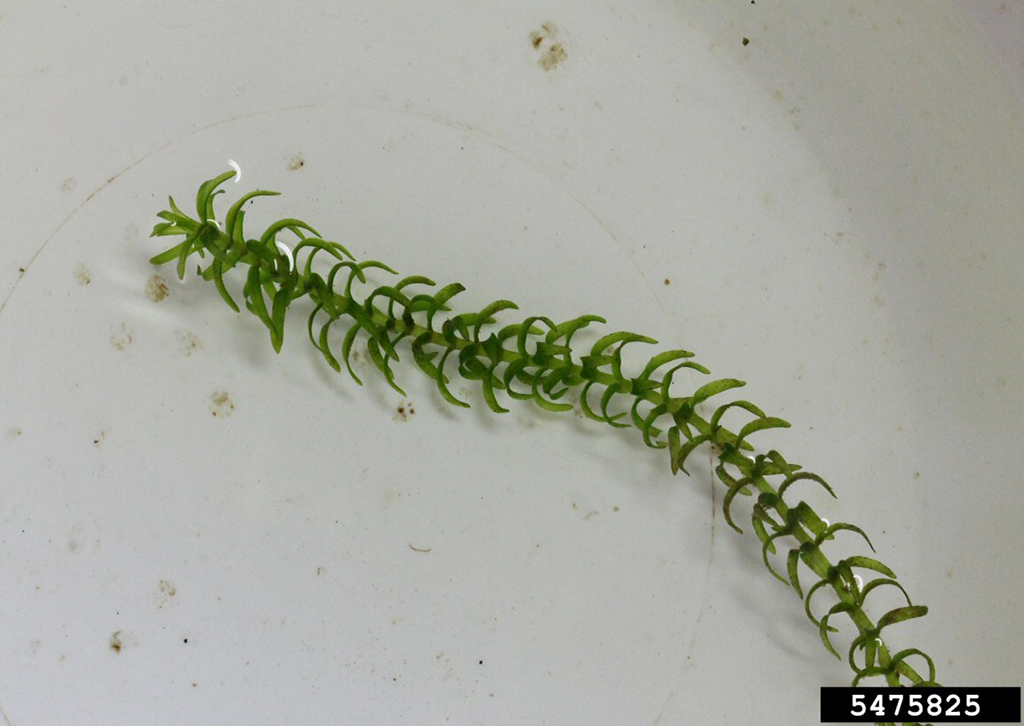What is Ontario Doing?
To prevent this unwanted invader from coming into the province, Ontario has regulated hydrilla as prohibited under the Invasive Species Act, 2015. For more information on the Invasive Species Act and Regulations, visit www.ontario.ca/invasionON.
Background
Hydrilla is an aquatic plant that has spread rapidly through much of the United States. Hydrilla’s native range is unknown, however, some scientists say the plant is native to Asia; others say Africa or Australia. Hydrilla was introduced to North America in the early 1950s when it was brought to the southern United States for use as an aquarium plant. It spread into waterways when people emptied their aquariums into lakes or rivers. Hydrilla is highly adaptable and it thrives in still and flowing waters, including rivers, lakes, ponds, wetlands, streams, and wet ditches, as well as in a range of nutrient and light conditions. The plant grows up to 2.5 cm (1 in) a day. It has a competitive advantage over many native plants because it begins converting sunlight to energy that helps it grow (the process known as photosynthesis) earlier in the day than most plants. Because tiny plant pieces can develop into new plants, hydrilla is easily spread when water currents, boat propellers, trailers, fishing gear, or people carry plants or plant fragments to new areas.
Range
In the United States, it has spread across the southern states from Florida to California, along the west coast in California and Washington, along the entire Atlantic seaboard, and inland through Pennsylvania, Indiana, Wisconsin, New York, and several other states. In 2024, hydrilla was found for the first time in Canada at Hillman Marsh Conservation Area near Leamington, Ontario. Hydrilla populations can now be found on every continent except Antarctica.
For an up to date distribution map of hydrilla in North America, visit www.EDDMapS.org/distribution.
Impacts of Hydrilla
- Once established, hydrilla is able to grow aggressively, outcompeting native plants.
- It forms dense mats that block sunlight from reaching other submerged plants, including native species.
- The plant degrades water quality by raising pH levels, decreasing oxygen, and increasing water temperature.
- It can hinder the flow of water, as well as recreational activities such as swimming, fishing, and boating.
- By causing stagnant water, hydrilla may provide habitat that allows mosquitoes to breed.
How to Identify Hydrilla
- The plant is a perennial that grows underwater.
- Stems are rooted, erect, either branched or unbranched, and grow up to 7.5 m (24.6 ft) long.
- Leaves are green, attached to the stem and arranged in whorls of 3 to 8. They have visibly saw-toothed edges, and sometimes have prickles on the underside.
- Flowers are small, with petals 2 – 4 mm (0.1 – 0.2 in) wide, and are white to reddish or white to light green with red stripes. When open they float on the surface of the water.
Similar Species
INVASIVE
Hydrilla
(Hydrilla verticillata)
Details
- Three to eight leaves in a whorl.
- Prominent sharp teeth on leaf edges.
- Prickly hairs on underside of leaf.
- 1 – 2 cm (0.4 – 0.8 in) long.
- Small white potato-like tubers can form on stem ends.
INVASIVE
Brazillian Elodea
(Egeria densa)
Details
- Four to six leaves in a whorl.
- Minutely toothed leaf edges are only visible if magnified.
- No prickly hairs on underside of leaf.
- Up to 4 cm (1.6 in) long.
- No tubers.
What You Can Do
- Learn how to identify hydrilla and how to prevent the introduction or spread of this plant with your watercraft or fishing equipment.
- Never buy, plant, or keep hydrilla in your aquarium or water garden. It is against the law to buy, sell, trade, possess, or transport hydrilla.
- Never deposit unwanted aquarium or water garden plants into Ontario’s lakes or rivers. Dispose of them in the garbage or away from any waterbody.
- Clean, Drain, Dry your boat, trailer, and equipment after each use, be sure to remove all plants, animals, and mud before moving to a new waterbody.
- If you have any information about the illegal importing, distribution, or sale of hydrilla, report it immediately to the MNR at 1-877-847-7667, toll-free anytime. You can also call Crime Stoppers anonymously at 1-800-222-TIPS (8477).
- If you find hydrilla or another invasive species in the wild, please contact the toll-free Invading Species Hotline at 1-800-563-7711, visit EDDMapS, or search for the ‘Invasive Species in Ontario’ project on iNaturalist.org to report a sighting.
Gallery
OFAH/MNR Invading Species Awareness Program. (2021). Hydrilla. Retrieved from: www.invadingspecies.com.
This factsheet may be reproduced for non-commercial purposes.
Header photo by Chris Evans, River to River CWMA, bugwood.org




